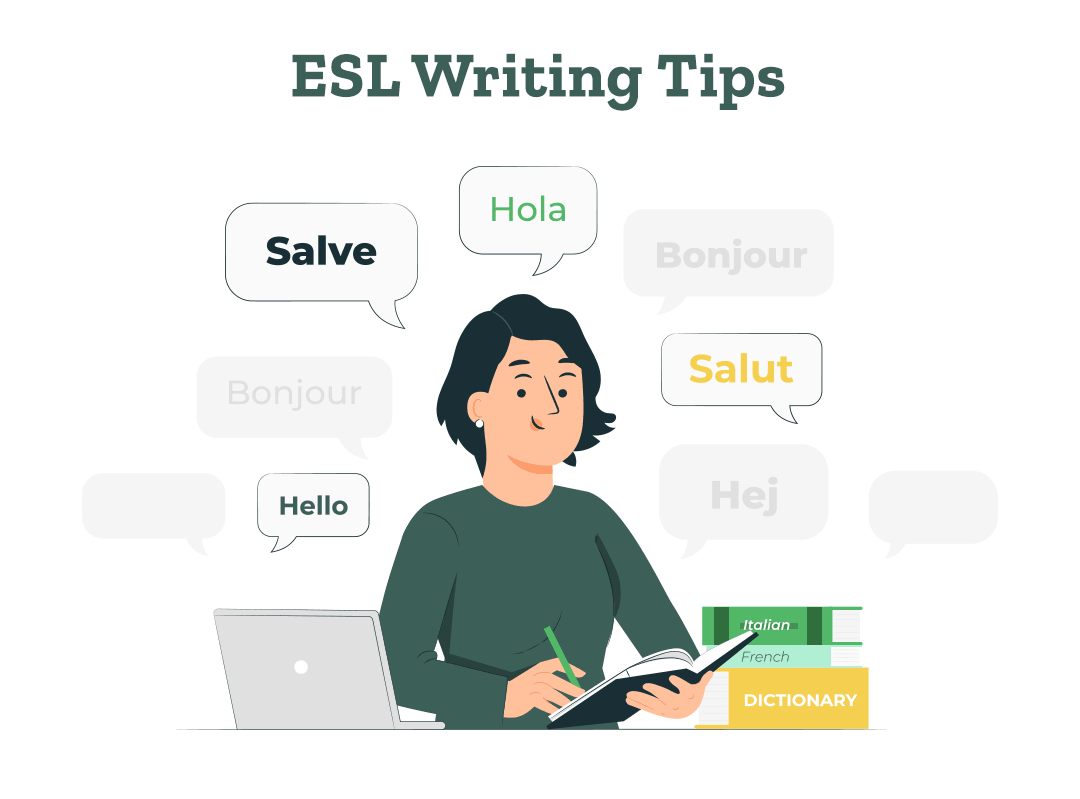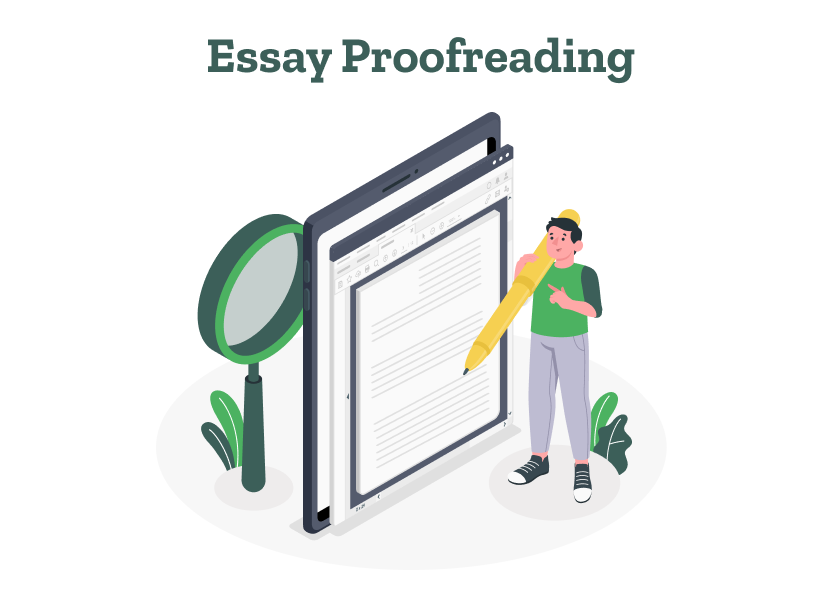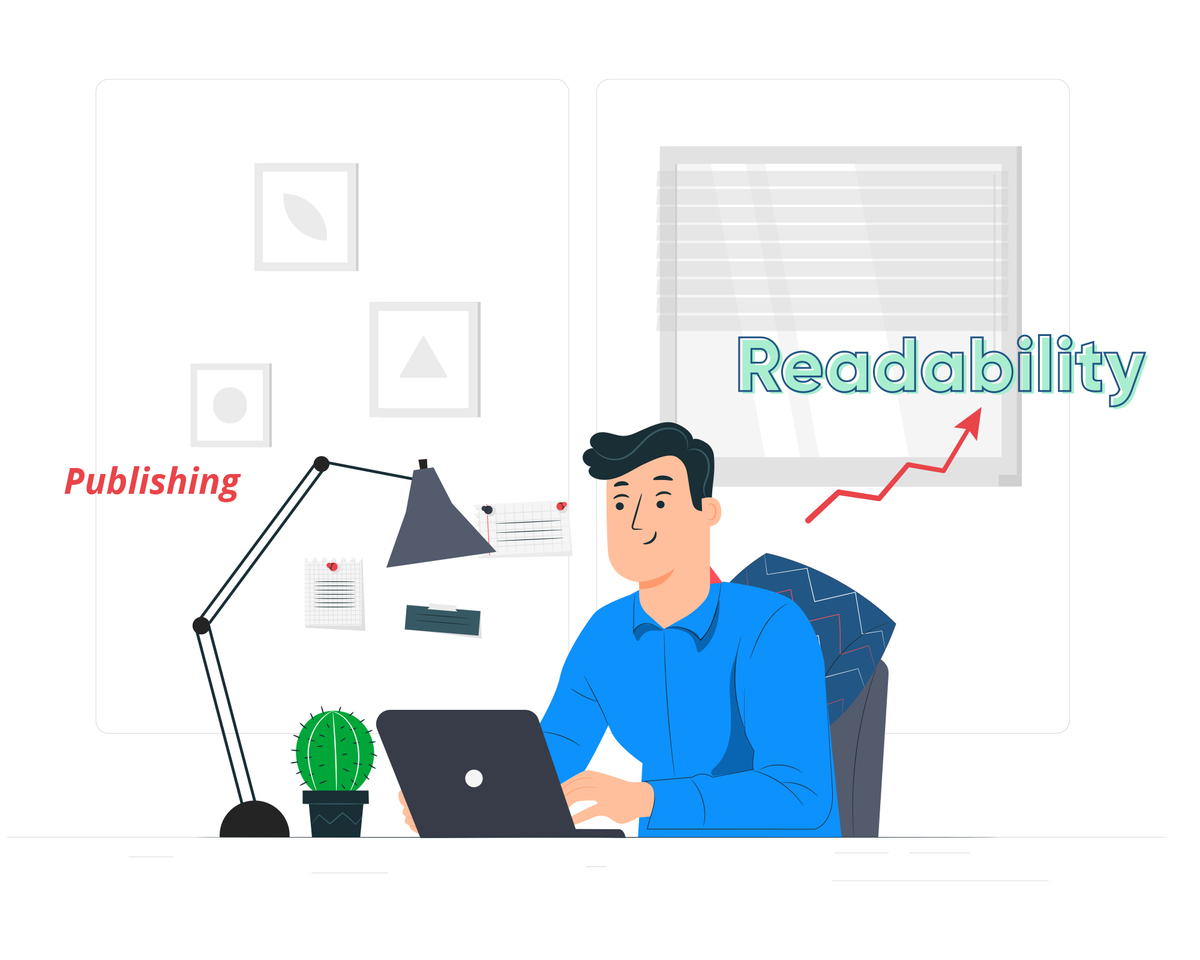- 10 Myths About Open Access Journal Publishing: Busted
- A List of Writing Contests in 2022 | Exciting Prizes!
- Common ESL Grammar Mistakes + How to Fix Them
- 10 Best Book Publishing Companies in 2023
- Screenplay Editing: Importance, Cost, & Self-Editing Tips
- Screenplay Proofreading: Importance, Process, & Cost
- Script Proofreading: Rates, Process, & Proofreading Tips
- Manuscript Proofreading | Definition, Process & Standard Rates
- 10 Best ESL Books for Students & Language Learners
- Tips to Write Better if English Is Your Second Language
- Novel Proofreading | Definition, Significance & Standard Rates
- Writing Contests 2023: Cash Prizes, Free Entries, & More!.
- Book Cover Design: An Introduction
- How Much Does Self-Publishing Cost?
- How to Hire a Book Editor in 5 Practical Steps
- Self-Publishing Options for Writers
- How to Promote Your Book Using a Goodreads Author Page
- A Step-By-Step Guide to Self-Publishing
- Traditional Publishing vs. Self-Publishing: Which Is Better?
- 7 Essential Elements of a Book Cover Design
- What Makes Typesetting a Pre-Publishing Essential for Every Author?
- 4 Online Publishing Platforms To Boost Your Readership
- How to Market Your Book Effectively
- What is Developmental Editing? A Self-Editing Checklist
- How to Find the Perfect Book Editor for Your Manuscript
- What Is an ISBN & How to Get One: The Complete Guide
- Typesetting: An Introduction
- Quick Guide to Novel Editing (with a Self-Editing Checklist)
- Manuscript Editing in 2023: Elevating Your Writing for Success
- Quick Guide to Book Editing [Complete Process & Standard Rates]
- How to Create Depth in Characters
- Starting Your Book With a Bang: Ways to Catch Readers’ Attention
- How To Craft a Murder Mystery Story
- How to Write a Powerful Plot in 12 Steps
- Research for Fiction Writers: A Complete Guide
- Short stories: Do’s and don’ts
- Joseph Campbell’s Hero’s Journey: Worksheet & Examples
- How to Write Dialogue: 7 Rules, 5 Tips & 65 Examples
- How to Write a Novel in Past Tense? 3 Steps & Examples
- What Are Foil and Stock Characters? Easy Examples from Harry Potter
- How To Write Better Letters In Your Novel
- Types of Characters in Fiction
- How to write your Protagonist
- How to Write Unforgettable Antagonists
- On Being Tense About Tense: What Verb Tense To Write Your Novel In
- How To Create A Stellar Plot Outline
- How to Punctuate Dialogue in Fiction
- On Being Tense about Tense: Present Tense Narratives in Novels
- The Essential Guide to Worldbuilding [from Book Editors]
- What Is Point of View: 1st, 2nd & 3rd POV with Examples
- How to Create Powerful Conflict in Your Story | Useful Examples
- How to Write a Book: A Step-by-Step Guide
- 5 Elements of a Short Story & 6 Stages of a Plot
- How to Write a Short Story: 6 Steps & Examples
Still have questions? Leave a comment

Checklist: Dissertation Proposal
Enter your email id to get the downloadable right in your inbox!

Examples: Edited Papers
Enter your email id to get the downloadable right in your inbox!
A Step-By-Step Guide to Self-Publishing
 Aug 01, 2022
Aug 01, 2022 5
min read
5
min read
Ever thought of writing a book? It’s most likely that you have. A recent study concluded that at least 80% of Americans have a book in them, but don’t really go on to write one. If the curious cat in you has got you to open this page, let’s assume that you’ve given it a serious thought. By the end of this article, you’ll be convinced that writing and publishing a book is well within your reach and you can do it entirely yourself (well, almost entirely). Read on…
Why write a book?
If you have stories to tell or ideas to share, that can be of value to even 10 people, that’s reason enough for you to publish a book. That little aspiration can grow into a huge ambition in the process. Writing a good book is a lifetime’s work that will only broaden your horizons as you go, provided you take it to heart.
Adding to the knowledge, understanding, and awareness of both the writer and the reader, writing a book is a two-way enhancement street. In today’s world, it has also become a very powerful marketing tool. You publish a book on a subject and can instantly get tagged as an “expert” or a “thought leader” and now everyone is taking you more seriously because you are a published author who has a Ted Talk. Yeah, look at me now Aunt Edna!
What is self-publishing?
It’s a self-explanatory term: To publish a book yourself. That might sound simple, but the entire process is long, immersive and one of the most difficult things you’d ever get yourself into, but totally worth it as evidenced in the benefits above.
Get some feedback
It’s best to float around your book to the best of your friends and family and get some feedback about the quality of writing, language, and content. All authors do it. As you write your next, you know whom to trust. For critical feedback, you could also share it with subject matter experts, if you know any. They offer insights and point out areas of improvement or logical fallacies if any. You want to make sure the book is legit before you press the big publishing button.
In his memoir “On Writing,” legendary author Stephen King said that he entrusts three friends to read his first drafts.
Choose a title
There was a lot of deliberation about what the classic should be called between F. Scott Fitzgerald and his editor before they settled on “The Great Gatsby”. And rightly so, we can’t imagine knowing that book by any other name now.
Spend a considerable amount of time coming up with the title for your book. You can take suggestions or brainstorm this with your reading crew to come up with a fantastic title. The tile you choose must encapsulate the essence of your book and additionally have these attributes:
- Attention-grabbing
- Memorable
- Easy to say
- Not embarrassing or problematic for someone to say it
Edit and proofread
The most common and solid advice out there is to hire an editor for your book. Take that advice seriously, and hire one immediately once you’re done writing the story to your heart’s content. Always aspire to write a bestseller and not just a mediocre book that’s going to sell the benchmark number of 250 copies. That is possible only when you find a solid sidekick who does the editing and proofreading for you to make it a stellar, error-free book.
Why is editing and proofreading your manuscript so important? Because let’s face it, when you’ve written thousands of words, tiny little grammar errors are bound to slip in, and it’s naturally hard for the author to see them having worked with the text for so long. An excellent editor makes your book stronger with their laser focus on precision of language, grammar, and story-telling. Out go the inconsistencies and confusing elements in your story once they read through it with their magic red pen.
Book design
This is the part of self-publishing you’ll mostly have to outsource to experts. There are three design elements of a book that you should think through –
➥ Book cover
You might have heard, “Don’t judge a book by its cover”, yeah, nothing is more misleading than that adage in the age of marketing. The cover design of your book is a huge factor for readers to be interested in picking up a book at the store. Make sure your copy is a stunning blend of the seven essential features of a book cover design to enclose your story in a beautiful package. Like, 99% of authors don’t have any experience with digital art, so it’s best you hire a professional book cover designer.
➥ Formatting
Formatting is the precursor to typesetting and the two are closely related. You can do this yourself. Arrange the basic layout of your book. Arrange the order of sections as you want them to appear, like the title page, table of contents, acknowledgments, prologue, and epilogue. Incase of non-fiction you’ll have to additionally arrange a bibliography, appendices, statistics, tables, and footnotes for references.
The precise placement of all these things is taken care of in the next step.
➥ Typesetting
What’s the least amount of space you can fit the text in? Printing books will burn your pocket (we will talk self-publishing cost in a while), so you have to ensure you make proper use of the real estate each page offers. Some intricate decisions involve:
- Choosing the appropriate font and font size to use.
- Whether to use separate fonts for the chapter titles and part titles?
- Spacing: between words and paragraphs.
- Line breaks, paragraph breaks, chapter breaks.
- Avoiding improper indentation.
- Sizing the page margins.
These are intricate functions which require exclusive software to properly arrange the text in books. It’s best you leave this to experts.
ISBN for your book
Getting an International Standard Book Number is not a mandatory task for self-publishing authors, especially for those taking the eBook only path. All major online publishing platforms allow you to publish and sell eBooks without having an ISBN registered.
But, if you plan to publish paperback books or hardbacks, we highly recommend you get one. A reader certainly won’t drop your book back at the store if they don’t see an ISBN on the back. They don’t care enough really. Then why the emphasis? That’s because if you want to establish yourself as a professional as in competing with traditional publishers, an ISBN serves as a mark of authority and legitimacy.

Choosing the right platform
So far the process has been all about perfecting the text of your manuscript to bring out a fabulous final product. Now you’re only inches away from hitting the publish button! You can deliberate and research the right platforms to publish your book even before you start writing.
Paperbacks or eBooks, which one is better? Well, let’s not get into it, that debate is never going to end. So, a better question to ask is “Which one out of the two is better for your book?” eBooks work better if your story is not too long or if you’re tight on budget. It’s obviously a lot cheaper than printing words on paper. But if you really have mighty aspirations of making it big as a writer, you should consider paperbacks sooner or later.

No matter which you choose, we highly recommend Kindle Direct Publishing (KDP), which now provides combined tools for both paperback books and e-books. KDP provides a seamless experience and is the reason why it’s the most preferred by budding authors.
Set up an account on your chosen platform, follow the procedure and introduce your baby to the world!
Marketing and promotions
You’re not done yet! As mentioned before, it’s a long process. Brace yourself to venture into another crazy bit: marketing your book!
If you want to be frugal and not spend much on advertising, gear up to step up your social media game to connect with your target audience. The web is your marketing playground. Promote your upcoming book via a series of posts, tweets, and images. Get people involved. Get your friends and family to share your book excerpts and promote your book before its release. Get people talking about you. Create a buzz!
It will be wise to set apart a chunk of your budget for promotional purposes. Set up a personal website, if you don’t have one already. It’s very important for authors to have one of their own. Run promotional campaigns there too. Hire digital marketers to run ad campaigns across the web.
The cost involved
You can technically self-publish for free; Don’t choose to print on paper, don’t make it aesthetically pleasing and don’t spend a dime promoting it. Now, imagine how the book turns out and how many people will be interested in buying it? Yeah, not a pretty picture.
All great things are born out of two things, sacrifice and investment. Self-publishing calls for both to create awesome books. The only cost elements involved are the ones where you need external assistance like editing and proofreading, book design and marketing. In traditional publishing, the publishing house takes care of all these expenses to make a remarkable book, so the only “spending” that the author has to do is that of time and energy.
You can spend anywhere between US $1500 – 20,000 to professionally do the deed. Break down your budget wisely for editing and proofreading, book design, and promotion activities.
That’s the entire process you need to follow to bring a book to life. If you haven’t ever been motivated enough, November is around the corner! Join thousands of people from around the globe to participate in NaNoWriMo. We hop it brings out the best in you and drives you to follow this process to publish a novel of your, own all by yourself.
Happy writing!












Very great post. I just stumbled upon your blog and wanted to say that I have really loved surfing around your blog posts. I’m hoping you write again soon!
I completely agree with what you have written. I hope this post could reach more people as this was truly an interesting post.